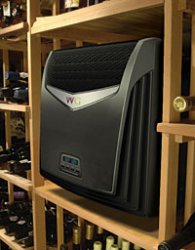Wine cellar construction is a specialized niche. As the experts know, installing the perfect refrigeration system is essential, to preserve wine. Getting the selection of a wine cooling unit right is directly linked to thermal load calculation. Engineers calculate thermal load based on specifics provided about your particular wine cellar. Even after a wine cellar has been built according to the correct specifications, the time comes when regular inspections are needed. During wine cellar inspections, the use of thermal imagery can determine whether the conditions of the cellar plus the wine cooling unit still provide the ideal environment for wine storage.
What factors are considered in calculating thermal load?
Some of the factors considered in calculating thermal load won’t change but others can be affected over time, creating
an altered environment. First, there are wine cellar specifications about the permanent structure, such as height of the cellar and the square footage and type of glass, if any. The following are among the other things considered when calculating thermal load:
- Which walls and/or ceiling are exposed to the sun or a non-conditioned environment, such as a garage?
- What are the humidity and temperate levels around the cellar?
- What in the cellar generates heat? The type of lighting used is highly relevant, since some bulbs create a significant amount of heat, even if non-UV, and others, such as LED lights, create a miniscule amount of heat, in comparison.
- Is the wine cellar residential or commercial? The frequency of use impacts the wine cellar environment.
- What type of wine cooling unit will be installed?
- Are there bends in combined ducting, and are those bends sharp or gradual?
- How many bottles are expected to be stored in the wine cellar?
Why wine cellar inspections are important
The answers about a wine cellar at the time it is built can change for many different reasons, impacting how ideally the wine cooling unit may be for the space. In addition, wine cooling units themselves eventually need to be replaced. They harder the cooling system has to work to maintain the right temperature, the sooner it will deteriorate.
Because of the changes that may exist, including those shaped by time, wine cellar inspections are important. For example, insulation may no longer provide the same level of efficiency at keeping out heat. A wine collection is an investment that needs to be protected, and diligence is important, to prevent valuable wine from being spoiled.
Thermal imagery is new technology that can be used to determine where heat may be coming from in a wine cellar and whether the environment is still maintained at the desired temperature and humidity range.
Does your wine cellar need an inspection?
Wine cellars have become more than dark, dank storage rooms for fine wine. In modern times, they are often enjoyed as places to bring friends and sample the wine. Another reason inspections may be needed is the addition of lighting. Contact the experts at Rosehill Wine Cellar, whether you need wine cellar construction or a professional wine cellar inspection. Don’t forget: Thermal load calculation is not a “one and done” venture.






